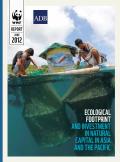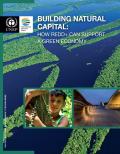
The widespread loss of natural ecosystems and biodiversity is much more than a conservation issue. Natural ecosystems provide socially and economically valuable services, such as food and fiber resources, clean water and climate regulation, that are fundamental to human welfare, but are often overlooked in decision-making processes.
Produced through a partnership between ADB and WWF International, this report provides examples of promising approaches for sustainably managing natural capital in the region. These are based on experiences from four important regional cooperation initiatives, which demonstrate the commitment of the participating governments to protecting the integrity of natural ecosystems while improving livelihoods and reducing poverty.

Payments for Ecosystem Services (PES) describes the situation where the user of an environmental service, such as water purification, pays the landowners who provide that service. For PES to exist, there must be a clearly defined user and supplier, as well as a number of other necessary conditions, which are defined in this document using a summary of current sources. Particular attention is paid to how these conditions currently obtain within the UNECE region. The range of forest environment services is explored through fourteen detailed case studies, which examine best practice in promoting PES. Political and public relations implications of PES are discussed at length, and recommendations include the need for clarity about where PES may be a useful tool in moving towards a green economy and where other methods may be more appropriate.
This report discusses the opportunities presented by the Brazilian Amapá State government’s intention to make the transition to a green economy. It explores initial progress in green policy and activity, and associated dynamics in the political economy, and lays out a broad but feasible set of sectoral and cross-sectoral policy options. The paper also offers an initial assessment of a pioneer, inclusive scheme of payments to small producers for forest-based environmental services: pro-extrativismo programme. It draws on lessons from Amazonas state that can help to inform Amapá’s green economy strategy and concludes with recommendations for further technical collaboration, and for priorities in sectoral policy and cross-sectoral enabling conditions, with a focus on government leadership.

This report advocates placing REDD+ into a larger landscape scale planning framework that can, and should, involve multiple sectors (especially those that are driving deforestation, sometimes inadvertently). This would go beyond forests to also serve the needs of energy, water resources, agriculture, finance, transport, industry, trade, cities, and ultimately all sectors of a modern economy. REDD+ would thereby add value to many other initiatives that are being implemented within these sectors. No longer simply an intriguing pilot effort, REDD+ would take its place as a critical element in a Green Economy.
Once again, the international community focuses on the preservation of Amazonian forests, in particular through a bundle of initiatives grouped under the term of REDD+. Initially focusing on reducing carbon emissions, the REDD+ process became increasingly linked with developmental goals that represent the primary interest of all Amazon countries. In consequence, REDD+ can be seen as another attempt to achieve the twin goals of environmental protection and rural development, and consequently, relies on the strategies and tools of past efforts. Against this background, we explore past experiences with key strategies for environmental protection and poverty alleviation in the Amazon to critically reflect about the potential of REDD+ to contribute to sustainable local development in the region. The analysis demonstrates that initiatives that pursued environmental goals mostly led to more restrictions and bureaucratic barriers to local forest users, while the prevailing approaches to promote rural dwellers showed ambivalent environmental outcomes.
